The Gift of South Dakota
Subscriptions to South Dakota Magazine make great gifts!
Subscribe today — 1 year (6 issues) is just $29!
Writers of the Iron Road
Jan 2, 2019
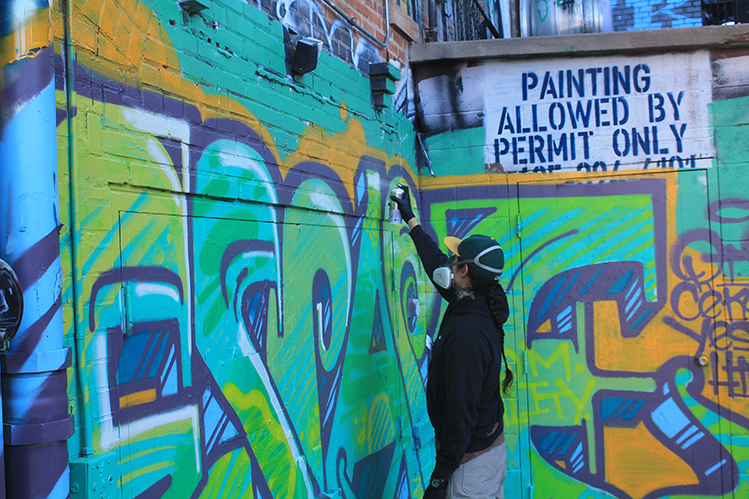 |
| Wakinyan Chief works in Rapid City's art alley. |
As an art form, graffiti on freight trains evokes a wide range of responses. Some consider graffiti writers to be vandals, while others amass photos of work by their favorite artists. One objective reality about freight train graffiti that it is illegal. On the other hand, many large companies and municipalities now hire artists with a pedigree in illegal graffiti to do commissioned murals. Rarely, a writer's trajectory could lead to commercial success. More often it can lead to fines and jail time.
Another given about train graffiti is that it does travel, and as such might be some of the most widely viewed art work in the nation, reaching people — if only peripherally — who may never set foot in an art gallery. South Dakota may not be a hotbed of graffiti, but encountering work by an urban artist in the isolated butte country of Harding County shows how built-to-roll these works really are.
Wakinyan Chief is a former graffiti artist. These days, you might find him spray-painting an installation in Rapid City's art alley. The alley, and his piece, is sanctioned by the city. But growing up in Chico, California, Chief got his start doing illegal graffiti — under bridges, on abandoned buildings, and on the graffiti writer's most mobile, and dangerous, platform — freight trains.
"What I really like about graffiti is that it's free,” he says. “You don't have to pay money to go into an art gallery. It's for everybody. Anybody can go watch a train go by and it's like a moving art gallery."
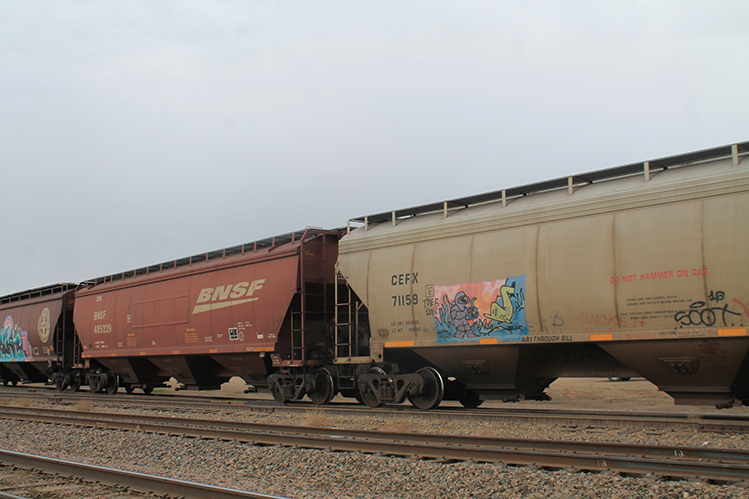 |
| A train with an "Under the Sea" theme passes near McLaughlin. |
He says his interest in graffiti started when he was about 13. He began by doing tags with sharpie markers. Then he graduated into aerosol. "I eventually convinced my mom to buy me spray paint. She was okay with it. So she took us to the store. She bought us a bunch of spray paint. Then she took us to this bridge where I wanted to go paint and said, ‘I'll sit up here and I'll look out and if I see any cops or anything like that I'll honk.’
"But I didn't know what to do. We just ran down there. Our adrenaline was pumping. I didn’t know what to write. My friend was like, 'Just write your name, like your signature. But make it so no one can read it except for you.' So, I wrote 'WAK,' W-A-K, like the first three letters of my name."
He soon changed his signature, but graffiti writing became a passion, if one with consequences. "The deal I had with my mom was that once I got caught, I had to quit. I couldn't quit. It became an addiction for me. I didn't have a lot of self-esteem or confidence. It was like this other person that I created — that I could kind of escape from who I was."
He did get caught, but by then he was hooked. He didn't follow through on the deal with his mom, and he's paid a price for that. "I have a few felonies as a juvenile and then I have three as an adult."
All three felonies are for painting freights. And getting caught by law enforcement wasn't the only hazard. "I had a lot of crazy experiences painting trains. Every train you paint, they consider it a felony, because the train companies say it costs more than four hundred dollars to paint over the train. So every train that you paint, that's multiple felonies they're going to charge you with. And so that was always pretty sketchy, cause we had to run from the cops a lot."
Eventually, it looked like the consequences of his mental escape would lead to real jail time, or something worse. Chief gave up graffiti and left California for Rapid City. "Now I've found other escapes like exercising and Brazilian jujitsu, and doing sign painting and things like that. But I really think it's important because I struggled with alcoholism for a really long time, and what I understand now is that alcohol was really just an escape from my reality. And I wasn't okay with who I was, so I was trying to escape."
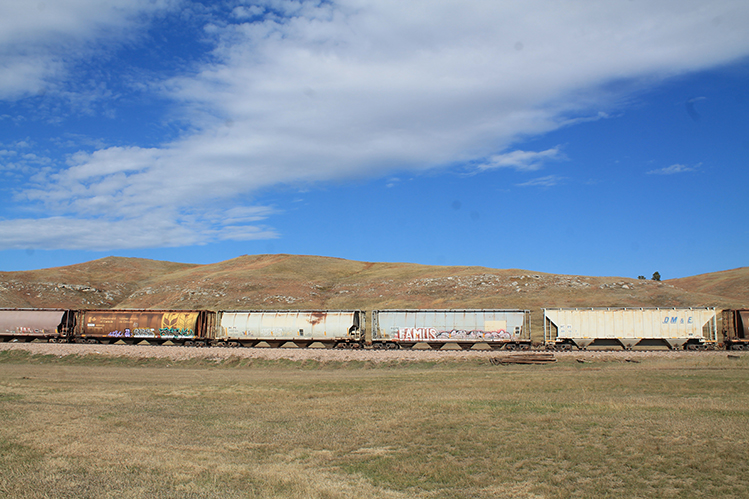 |
| "Famus" passes through Buffalo Gap. |
Though he grew up in Northern California, Chief's heritage is here. His father is Oglala Lakota. He plotted his own escape from California to be closer to the Pine Ridge reservation. Right now, he's teaching some of his skills to young artists there through a program called Generations Indigenous Ways. He says kids there could also use a mental escape hatch. "What I realized is that's really what kids need, especially on the reservation. Because that's the reason why so many people drink and turn to alcohol and drugs. That's all they're trying to do is trying to escape from their reality."
The alter egos that graffiti artists like Chief create — whether to escape from reality, or themselves — assert a certain kind of power, enhanced by the mysterious identities of the artists — as they travel across the wide open spaces, through big cities and one-horse towns.
Charlie Davis of Aberdeen is a long-time admirer of train graffiti. An avid railroad modeler — and member of the James Valley Model Railroad Association — he often scouts the Hub City's railroad yards looking for work by his favorite artists, camera in hand.
Then he meticulously resizes the photos he takes down to model railroad scale decals, taking care to remove shadows and preserve original details. "This one here," he says, "pointing to one of the decals, in rows on sheets of sticker paper, "I don't know who that artist is. The picture was sent to me by a guy in Los Angeles, to make him a decal out of it. And he took the picture through a chain link fence. So I had to go in there and get rid of all the fence. And it took me about eight hours."
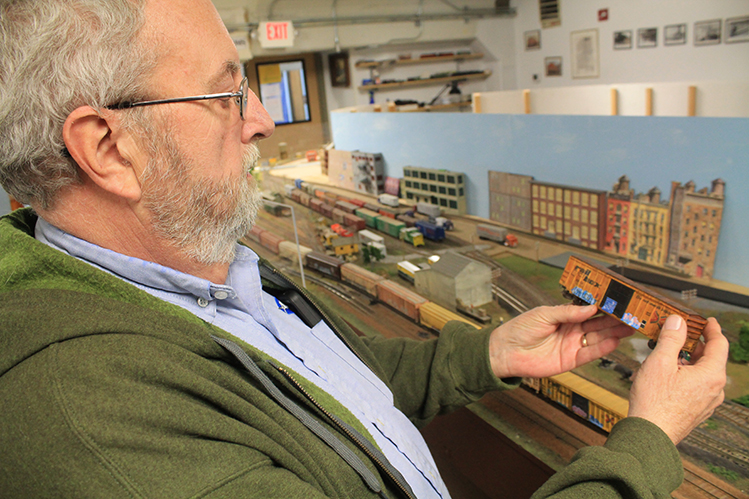 |
| Charlie Davis inspects one of his model boxcars, complete with realistic graffiti. |
The work can be tedious but once the decals are applied to his own model railroad cars, his trains become miniature moving art galleries.
Through his years of observing, photographing — and often miniaturizing — work by graffiti artists, he's become a fan of certain artists' work. "One of my favorite ones is called 'Mr. HBAK,'" says Davis. "'HBAK' stands for 'Hell Bred A Killer.'"
Mr. HBAK often incorporates images from popular culture into his productions. One large-scale piece he did — which Davis has reproduced — features Oompa Loompas.
Graffiti is recognized as one of the four elements of hip hop, and in a way what Charlie Davis does is a kind of creative reuse, the way a producer might lift a sample, or Mr. HBAK might re-appropriate the Oompa Loompas. And his work has been recognized by at least a few in the graffiti community.
"Probably the most famous artist that I've seen here — and I call him an artist because they are — is Ichabod. And his graffiti usually has "ICH" or "Ichabod." A lot of times you'll have a skull and a hand with a finger sticking up in the air. He's probably done five thousand cars by now.
"He actually contacted me about six years ago through eBay — which is where I sell my decals — and thanked me for making them available to modelers. So I sent him some. And he got them, and he told me they were great. And that's the last I've heard from him."
Not everybody in the worlds of railroading, or even model railroading, share Charlie Davis' appreciation for train graffiti. "The railroads hate it, and a lot of modelers hate it. I get comments from modelers who won't touch anything that has graffiti on it. And I've had people tell me at train shows that I've attended that I'm helping to promote vandalism and lawlessness because I'm selling these graffiti decals. But I tell them back, well, it's the real thing. If you want to emulate the real world today, in addition to weathering your cars, you need to have some graffiti on them."
One notable piece that Davis has scaled down encapsulates the divide between graffiti artists, the railroads and some railroad enthusiasts. "It's on the whole side of a Burlington Northern Santa Fe covered hopper. It reads 'Artists Making Foamers Mad.' Well, I'm a foamer, I guess."
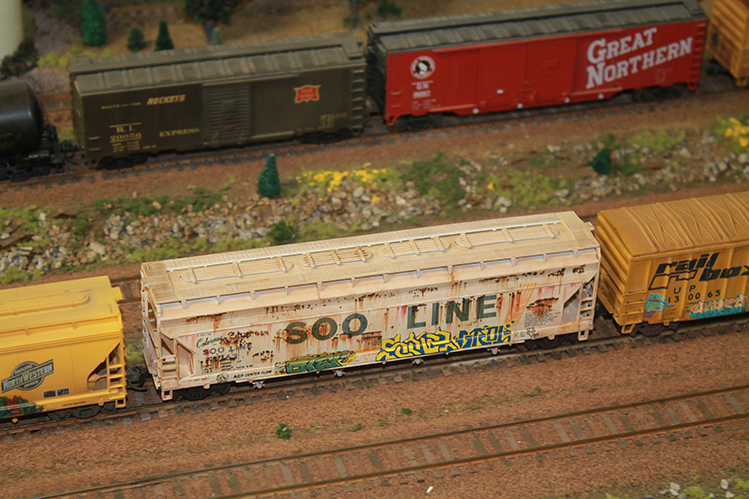 |
| A train model by Charlie Davis. |
"Foamer" is slang for rail fans.
"But, what it's doing is saying that the graffiti writers are making the foamers, that don't like graffiti, angry cause they're defacing their stuff."
Charlie Davis may be a foamer, but anger isn't what he feels when he sees what he feels is a well-executed piece of train graffiti. "I don't have any idea how many pictures I have, but I would guess at least twenty thousand. For being in an area that doesn't have the huge volume of train traffic that they have in the Twin Cities or Fargo, for example, and other places, we do get an interesting variety of graffiti that comes through here."
Davis' own models include numerous cars by his favorite graffiti writers, like Mr. HBAK and Ichabod, and an occasional one-off by artists unknown.
For his part, Wakinyan Chief doesn't see as many trains in Rapid City as he did in Chico, but he has lucked out in a way. "I ended up getting to live right next to the train tracks," says Chief. "They opened up a line that used to be dead. Now I get to see trains coming between here and Minnesota all the time. I see my friends’ trains a lot. And then I see a lot of writers that I know, new writers that I never saw."
Nowadays, he sticks to legal artwork, but despite the dangers, he still reminisces about his days as a writer. "I always thought, when I was younger — I was sneaking out and painting rooftops and stuff — what are all the other kids my age doing. And they're probably all at home, doing homework, watching TV, playing video games or whatever.
"I'm out here cold, in the rain, sneaking out, might get arrested. There are drug addicts and homeless people. And I've seen all kinds of crazy stuff go down. I still think that graffiti writers are the most dedicated artists there are. Because they have to go out and go through all these extremes to just make it happen. And it's for everybody. Anybody can see it."
Michael Zimny is the social media engagement specialist for South Dakota Public Broadcasting in Vermillion. He blogs for SDPB and contributes arts columns to the South Dakota Magazine website.



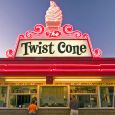
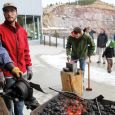

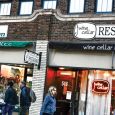



Comments